What is Dolby Atmos and Dolby Vision and its difference?
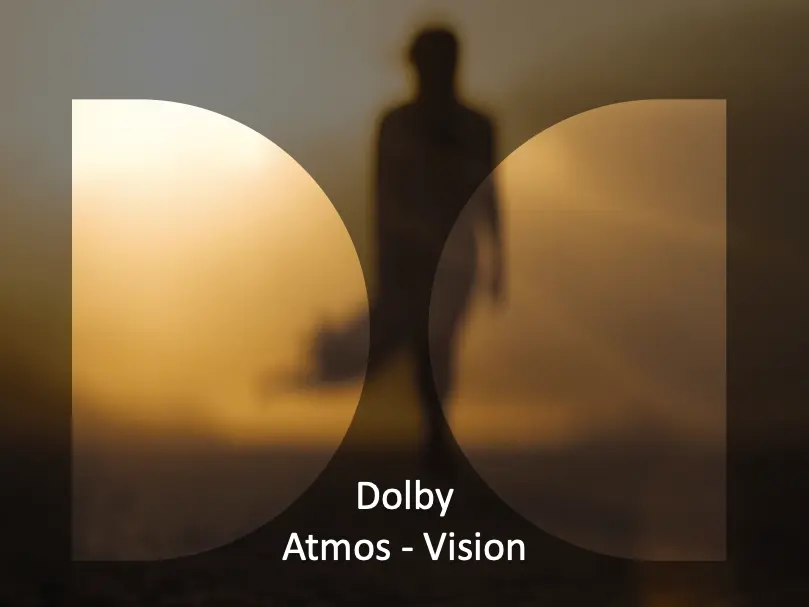
Introduction to Dolby Atmos and Dolby Vision
Dolby Atmos is surround sound technology. Dolby Vision is a process of High Dynamic Range videos. Both help you get a realistic cinematic experience.
Overview of Dolby Atmos and Dolby Vision
Dolby Atmos and Dolby Vision are designed for varied applications, but their ultimate purpose is to give an ultra-high-end cinematic experience, whether in a tiny bedroom and living room home theater setup or an immersive, luxurious, and delectable home theater surround sound system.
American director and film producer directed the Hollywood movie “Tomorrowland.” His name is Mr. Brad Bird. It is the first film to use Dolby Atmos and Dolby Vision.
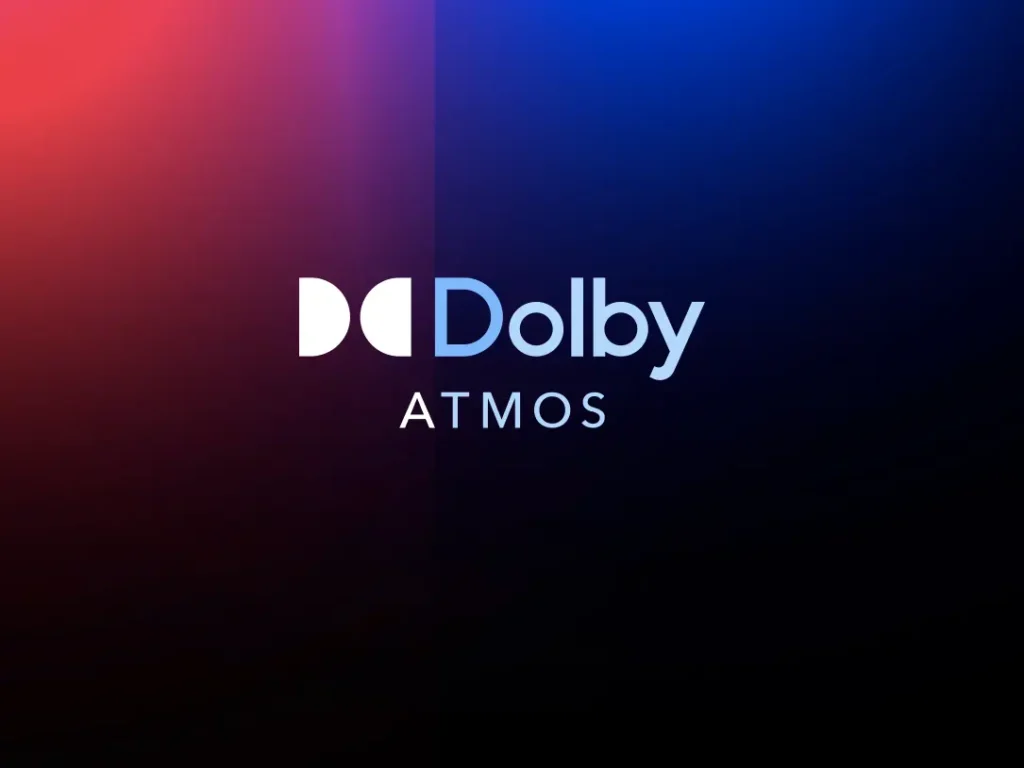
Understanding Dolby Atmos
Dolby Atmos is the newest and most advanced audio processing technology for Surround Sound. It provides three-dimensional sound space, including overhead.
Explanation of Dolby Atmos Technology
Dolby Laboratories, Inc. introduced Dolby Atmos in April 2012. Atmos is the new cinematic format. It adds a wide overhead sound. Pixar Animation Studios produced the American animated fantasy film “Brave”. It was the first movie to use Dolby Atmos surround sound.
Benefits of Dolby Atmos in Movies and TV
Dolby Atmos is a surround sound audio format technology. It gives a wider surround effect in movies, music, and games. It is available in many speaker configurations. These range from Dolby Atmos 5.1.2 to Dolby Atmos 7.4.4.
How Dolby Atmos Works with Surround Sound Systems
As we discussed early, Dolby Atmos is a surround sound format. Dolby Laboratories Inc. introduced it in January 2012. It was a new evolution, or you can say innovation, from Dolby Laboratories. It came to the Hi-end audio industry after Dolby Digital Plus in 2004.
Dolby Digital Plus had a 7.1 channel configuration. This gives great surround sound. It is much better than its predecessor, Dolby Digital 5.1. But, to add more detailed hi-end luxuries, home theater setups use Dolby Atmos. With Atmos, you can add overhead speakers in the ceiling. This gives you a wider surround sound.
Imagine You are watching “The Lord of the Rings: The Rings of Power” on Amazon Prime. Or “Game of Thrones: House of Dragons” on HBO. Both series have Dolby Atmos audio. If you have a Dolby Atmos home theater system, you will not only hear sound from your left, right, and back. You will also hear it from above your head. This gives you a cinematic experience. You will feel that you are in the episode.
Dolby Atmos setup comes in many speaker formats and with a big price tag. If you’re not looking for a budget friendly home theater system then you can be a member of Dolby Atmos Club.
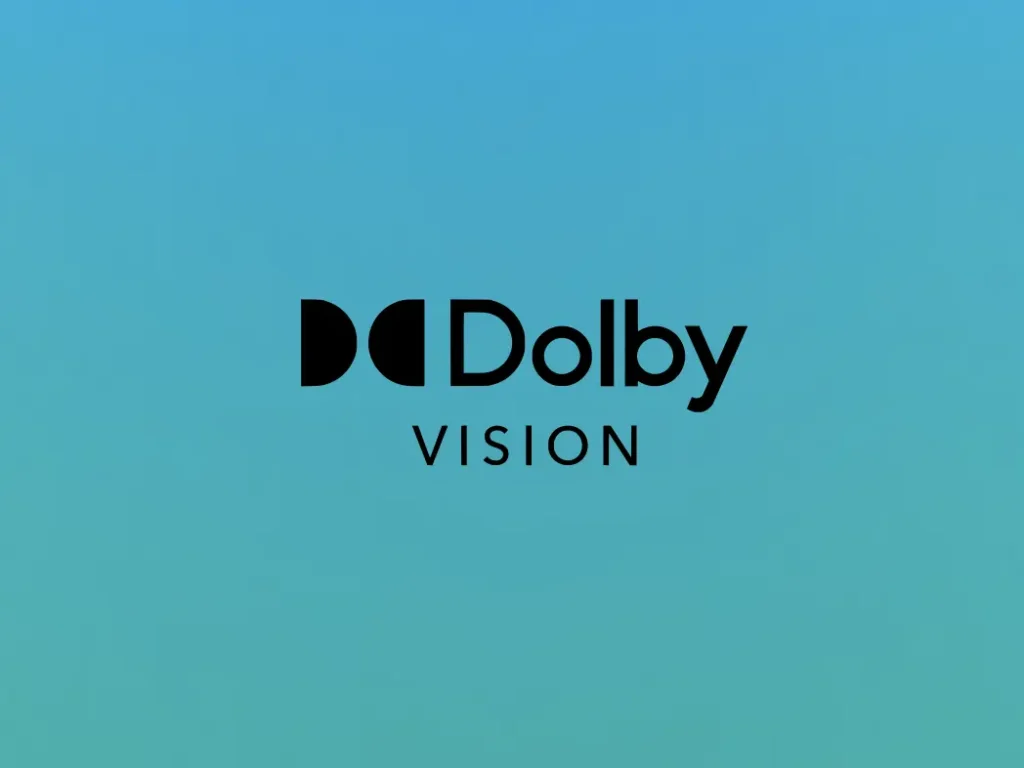
Exploring Dolby Vision
It’s the newest and best video tech. Dolby Vision is an HDR format. It improves the contrast, brightness, and color of images. It works on 4K and 8K home cinema projectors and flat TVs.
Explanation of Dolby Vision Technology
Dolby Laboratories, Inc. It introduced Dolby Vision in January 2014. This was after 4K. It brought high-dynamic-range (HDR) and wide-color-gamut technology. Dolby Vision adds more depth; it has incredible contrast and more colors. These are better than you have dreamed possible. It makes movies, TV shows, and games better.
Advantages of Dolby Vision in Visual Display
Dolby Vision is video processing technology. It increases brightness, contrast, and color depth. This makes the picture look clearer and more realistic. Nowadays it’s used in most of the Over The Top (OTT) platforms and movies.
Comparison with Other HDR Technologies
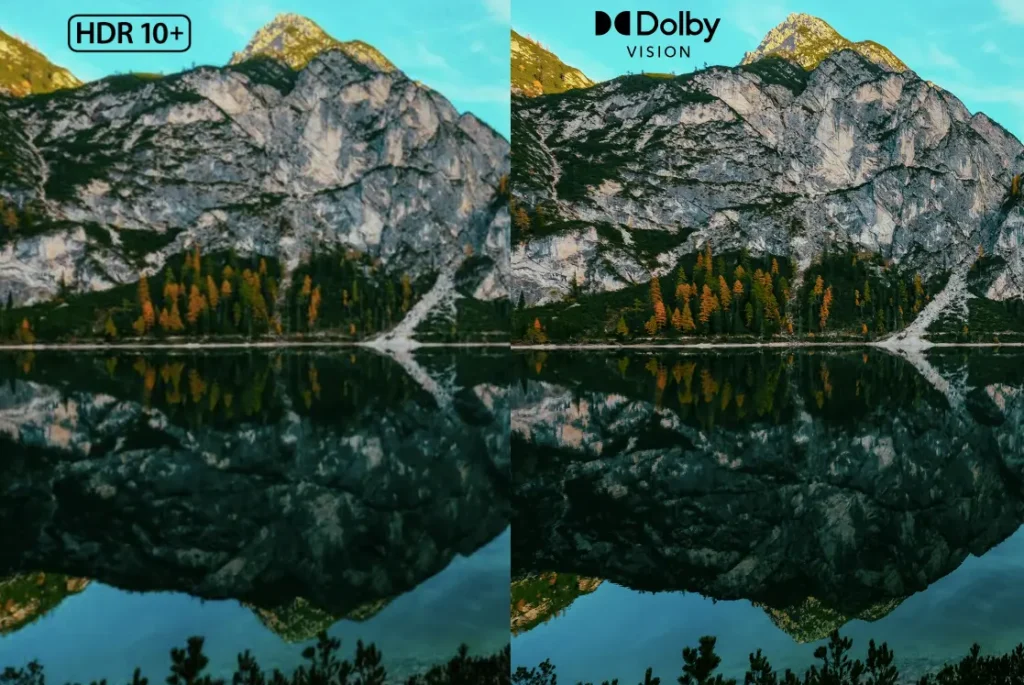
Dolby Vision is one of many High Dynamic Range (HDR) technologies. The system design caters to home visual systems, such as home cinema projectors and Ultra HD TVs.
Let’s compare Dolby Vision with other HDR (High dynamic range ) technologies.
HDR10:
HDR10 does not support dynamic metadata like Dolby Vision. In short, Many devices and video content platforms use HDR10 as the standard for HDR content. This can result in suboptimal picture quality in scenes that are very bright.
HDR10+:
HDR10+ is an upgrade of HDR10. Samsung, Panasonic, and 20th Century Fox developed it. Like Dolby Vision, HDR10+ supports dynamic metadata. This allows for scene-by-scene or even frame-by-frame HDR optimization. But it has less industry support than Dolby Vision.
HLG (Hybrid Log-Gamma):
HLG (Hybrid Log-Gamma) is a broadcast HDR standard. The British Broadcasting Corporation (BBC) and Nippon Hōsō Kyōkai (NHK) developed it. Unlike Dolby Vision and HDR10, HLG works with standard dynamic range (SDR) displays. It can show HDR content on compatible displays and still look ok on SDR displays. But, HLG does not offer the same level of peak brightness and color depth as Dolby Vision.
Technicolor HDR:
Technicolour HDR is another HDR technology that competes with Dolby Vision. It aims to provide better range and color accuracy. But, few have adopted it compared to Dolby Vision.
Differences between Dolby Atmos and Dolby Vision
Dolby Atmos is the audio format and Dolby Vision is the video format.
Dolby Atmos provides surround sound. It uses not only left, right, and back speakers but also ceiling speakers and subwoofers. These create wider, deeper, more detailed sound in your high-end home theater systems.
Dolby Vision increases brightness, contrast, and color depth. This makes the picture look clearer and more real. Nowadays it’s used in most of the Over The Top (OTT) platforms and movies.
Distinct Features and Functionality
Dolby Atmos provides immersive surround sound with speakers placed around the listener, including overhead speakers for a more three-dimensional audio experience. On the other hand, Dolby Vision enhances the video quality by improving brightness, contrast, and color accuracy, resulting in a more vivid and lifelike picture. While Dolby Atmos focuses on audio, Dolby Vision focuses on the visual aspects of the content. Both technologies aim to enhance the overall entertainment experience, but in different ways.
Let Check some Dolby Atmos formats. (Channel Configurations)
Dolby Atmos 5.1.2 channel home theater system.
You need to add two ceiling speakers to the 5.1 channel Dolby Digital Home Theater to make it 5.1.2 Dolby Atmos. Or, you can use the Dolby Atmos-enabled speaker module (like the Monitor Audio Silver AMS 7G) on the front.
Also, some front speakers (Focal SIB EVO DOLBY ATMOS 2.0 Speakers) now come with extra drivers. They are for full-range sound. The top of the speaker has built-in features. It works on the reflection of sound. But, many parameters have to be right for it to work well.
Also For this Audio Video Receiver should be compatible with Dolby Atmos 5.1.2 format. This one is the most basic Dolby Atmos configuration available today. You can use it in bedrooms or small living rooms.
The cheapest configuration of Dolby Atmos 5.1.2 channel home theater system will cost around INR 4,50,000. It includes Dolby Atmos 5.1.2 speakers and an AV Receiver.
Dolby Atmos 7.1.2 channel home theater system.
In Dolby Atmos 7.1.2 channel home theater system with 7.1 Dolby Digital Plus speaker setup you need to add two more ceiling speakers above your seating position. Or, you could add Dolby Atmos-enabled speakers (Klipsch RP-500SA II) on the front.
For this Audio Video Receiver or Audio Video Processor should be compatible with Dolby Atmos 7.1.2 channel format. You can use it in living rooms and dedicated theater rooms.
The cheapest option of Dolby Atmos 7.1.2 channel home system will cost around INR 6,50,000. It includes Dolby Atmos 7.1.2 speakers and an Audio Video Receiver.
Dolby Atmos 5.1.4 channel home theater system
For Dolby Atmos 5.1.4 channels home theater system with 5.1 Dolby Digital speakers you need to add four more ceiling speakers. Or, can use two Dolby Atmos-enabled speaker modules which would go on the front and two ceiling speakers above your seating position.
For this your Audio Video Receiver should be compatible with Dolby Atmos 5.1.4 channel format. You can use it in bedrooms, living rooms, or media rooms.
The cheapest option will cost INR 9,50,000. It includes a 5.1.4 Speaker with AV Receiver for a basic Dolby Atmos 5.1.4 channel home theater system.
Dolby Atmos 7.1.4 channel home theater system.
The system is a Dolby Atmos 7.1.4 channel home theater. It has a 7.1 Dolby Digital Plus speaker and you need to add four ceiling speaker.
Your AV Receiver or Audio Video Processor should be compatible with Dolby Atmos. It should support 7.1.4 channels. You can use this format in the living room, media room, or delicate theater rooms.
The lowest cost will be INR 12,50,000 for the basic Dolby Atmos 7.1.4 home theater system. It includes a speaker with an Audio Video receiver.
Dolby Atmos 7.4.4 channel home theater system.
As same as Dolby Atmos 7.1.4 channel home theater system. Add on to 7.1 Dolby Digital Plus speaker setup you need to pass four more ceilings. Also, more subwoofers need to add a total of four woofers. You can use this format in Delicate Media or Theater rooms.
The cheapest option will cost INR 15,00,000. It is for a basic Dolby Atmos 7.4.4 channel home theater system.
What is Dolby Vision
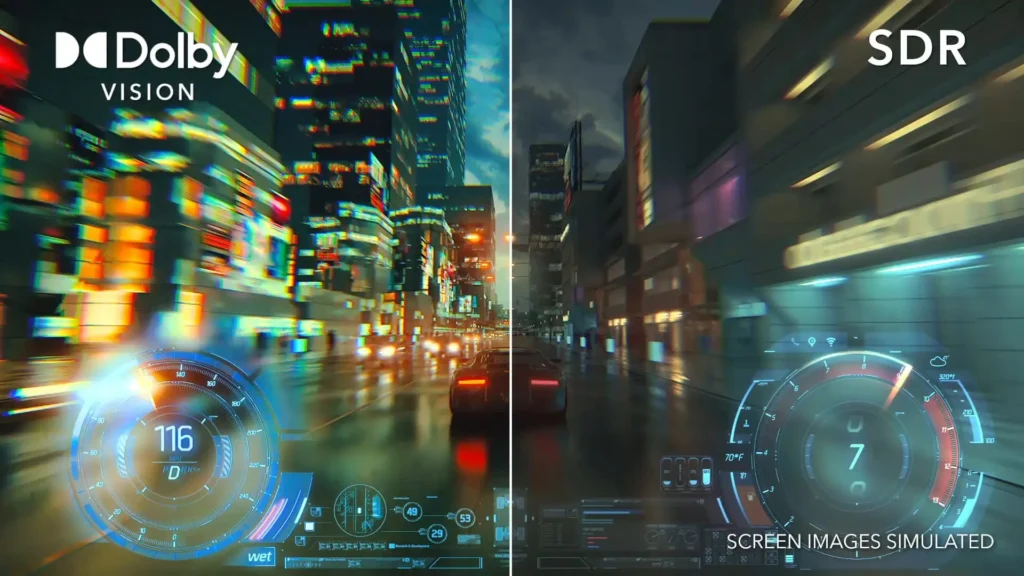
As we discussed, Dolby Laboratories, Inc. introduced Dolby Vision in January 2014.
Dolby Vision supports up to 8K resolution. It has up to 12-bit color and peak brightness of 10,000 nits. The Dolby Vision spec says pro monitors can only reach 4,000 units of peak brightness. These include the Dolby Vision HDR reference monitor.
Dolby Vision video can show videos with peak brightness up to 10,000 cd/m2 and a color gamut up to Rec. 2020. Current flat screens can’t show the full Dolby Vision brightness and color range. There are no brightness and color gamut capability requirements for consumer displays. The consumer display has lower color volume than the mastering display. So, we adjust the content to the consumer display based on the dynamic metadata.
Applications of Dolby Atmos and Dolby Vision
- Since 2015, numerous filmmakers have embraced Dolby Atmos and Dolby Vision in their productions, including:
- “John Wick: Chapter 3,” directed by Chad Stahelski
- “Baby Driver,” directed by Edgar Wright
- “Avengers: Infinity War,” directed by Anthony and Joe Russo
- “Dune,” directed by Denis Villeneuve (upcoming in 2024)
- In the past, enjoying Dolby Atmos sound and high-definition video required a good Blu-ray player and purchasing or renting Blu-ray discs.
- Presently, Over The Top (OTT) platforms have gained popularity, especially among Indian audiences, with Netflix, Amazon Prime, and Disney+Hotstar being the top choices.
- OTT platforms offer a plethora of content, including movies and series, available in Dolby Atmos and Dolby Vision, requiring only fast internet and compatible devices such as a 4K/8K TV or projector and a Dolby Atmos surround sound system.
- Most 4K/8K flat televisions, home cinema projectors (both laser and lamp), and new gaming consoles like Sony PlayStation 5 and Microsoft XBOX SERIES X and SERIES S support Dolby Vision.
- The latest Audio Video Receivers (AVR) and Processors also integrate Dolby Vision, along with popular media players such as Amazon Fire TV Stick 4K, Chromecast With Google TV (4K), and Apple TV, which support various formats including Dolby Atmos, Dolby Vision, and DTS:X.
Usage in Movies and Film Industry
Many Hollywood movies now have Dolby Atmos and Dolby Vision. They won many awards, including Academy Awards. Dolby Atmos and Dolby Vision made movies more realistic. You can see them in a Cinema hall, your hi-end home theater, or a preview theater.
Lets have look on some of the best movies with Dolby Atmos and Dolby Vision
Dolby Atmos Movies
- Gravity – Directed by Alfonson Cuaron
- Dune: Part One – Directed by Denis Villeneuve
- Top Gun: Maverick – Directed by Joseph Kosinski
- No Time to Die – Directed by Cary Joji Fukunaga
- Ford v Ferrari – Directed by James Mangold
Dolby Vision Movies
- Blade Runner – Directed by Denis Villeneuve
- Ready Player One – Directed by Steven Spielberg
- Black Panther – Directed by Ryan Coogler
- A Quiet Place – Directed by John Krasinski
- Deadpool – Directed by Tim Miller
Integration in Home Entertainment Systems
Configuring Dolby Atmos and Dolby Vision for top performance is challenging. They should fit with your house’s interior design, especially in a living room. Which required great knowledge of product and experience. Also need proper communication and indotrading with interior designer and architect. So, take the advice of an Audio Visual consultant or any expert. They can help you choose the right audiovisual gear, setup, placement, and calibration. Because making a High-end Home Theater setup comes with a big price tag, it’s not a cheap solution.
Dolby Atmos integration.
- Dolby Atmos requires specific hardware, including speakers capable of producing overhead sound. These can be in-ceiling speakers, upward-firing speakers, or Dolby Atmos-enabled speakers; they bounce sound off the ceiling to create the illusion of overhead audio.
- You also need Audio Video receivers or Audio Video Processors. They must support Dolby Atmos to decode and process its audio signal.
Dolby Vision Integration.
- Dolby Vision requires a compatible device such as a TV or Home Cinema Projector. These displays must support Dolby Vision processing.
- Blu-ray players, streaming players, or gaming consoles must also support Dolby Vision. They are source devices.
- You need high-speed HDMI cables. They are for 4K 2.0 and 8K 2.1 HDMI. They support up to 18 GBPS and 48 GBPS, for 4K and 8K. They are for Dolby Vision content. You need them for proper integration.
Conclusion: Dolby Atmos and Dolby Vision
Dolby Atmos is the most advanced audio format today. Dolby Vision is the most advanced video format. It gives detailed and clear ultra HD picture quality. It also gives breath-taking surround sound. Contact an audiovisual consultant or expert. They will help set up support for Dolby Atmos and Dolby Vision.

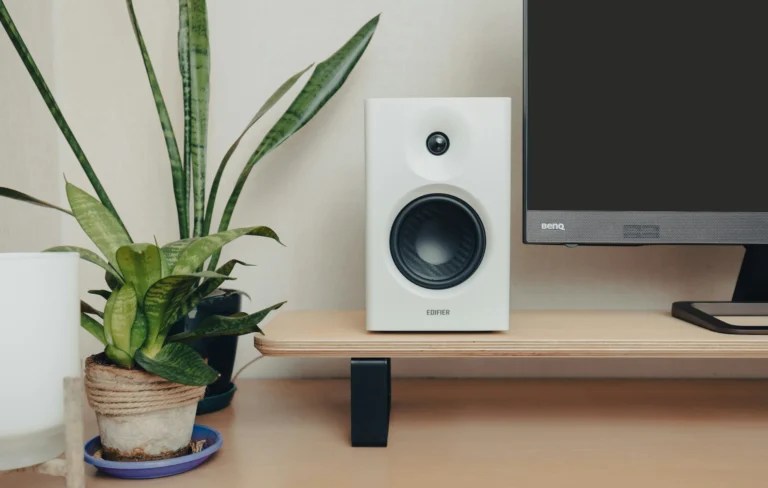
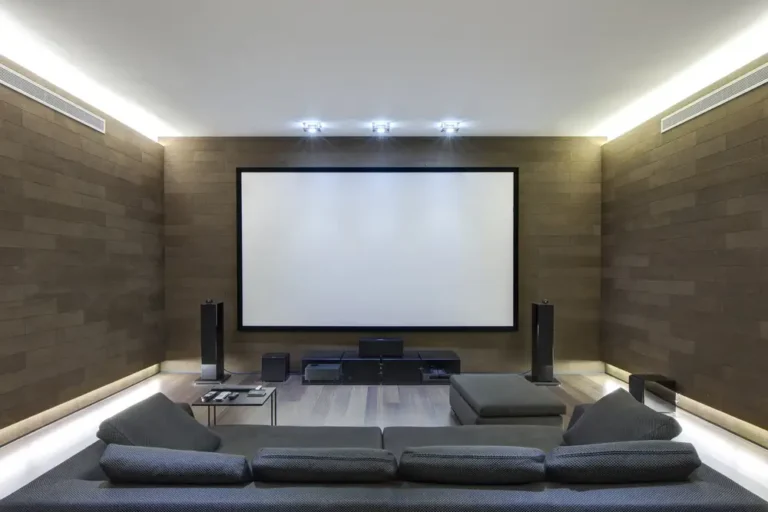
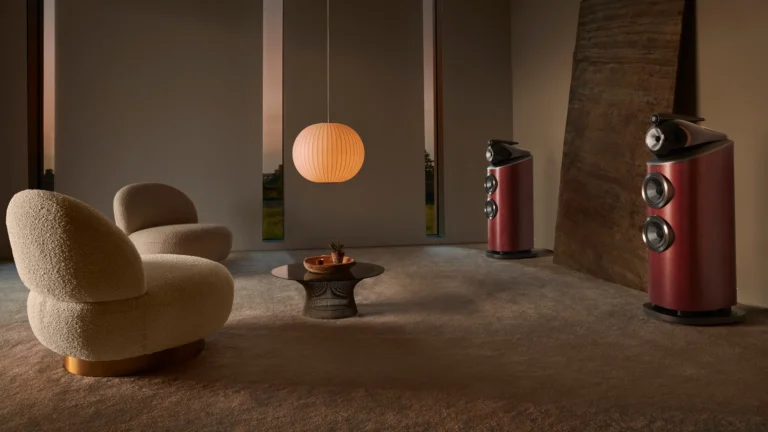
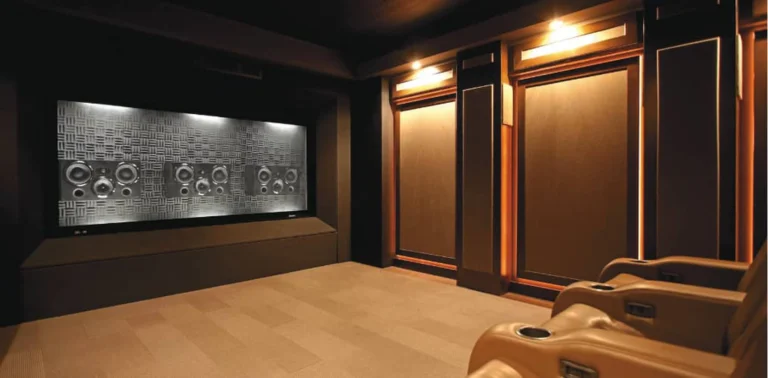
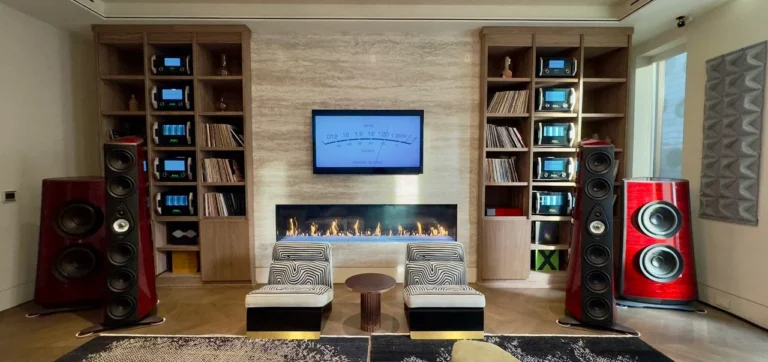
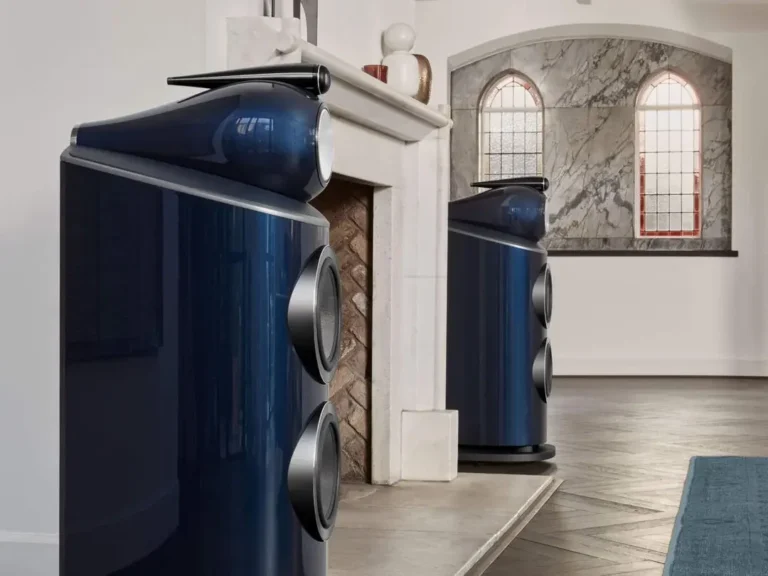
2 Comments
Comments are closed.